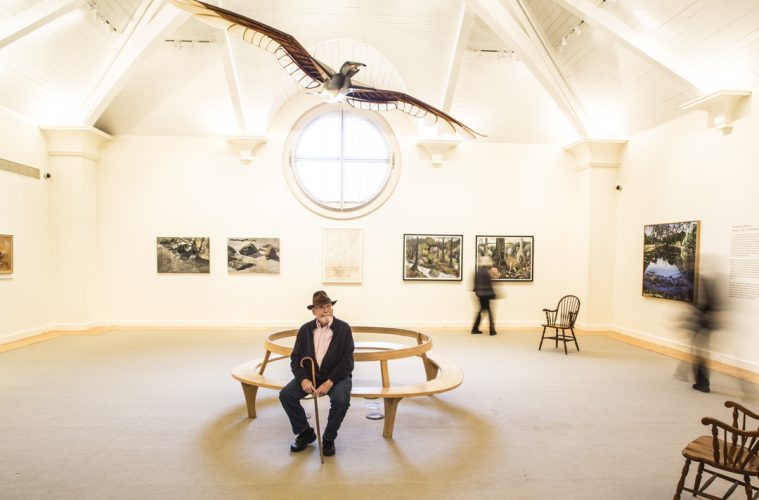In this watery part of the world, women have historically sewn sails, canned fish, and—sometimes from tucked-away studios—made art. A small exhibition from the collection of the Cape Ann Museum, Championing Women: Selections from the Permanent Collection, celebrates the natural beauty and raw grit of Cape Ann as seen by some of its hardest-working artists.
For decades, these women have kept themselves busy creating from Manchester-by-the Sea, Rocky Neck, and Annisquam. Their enduring inspiration predates the hashtags and memes of the #MeToo movement, making the exhibition’s timing with any recent women’s movement merely a coincidence, says curator Martha Oaks.
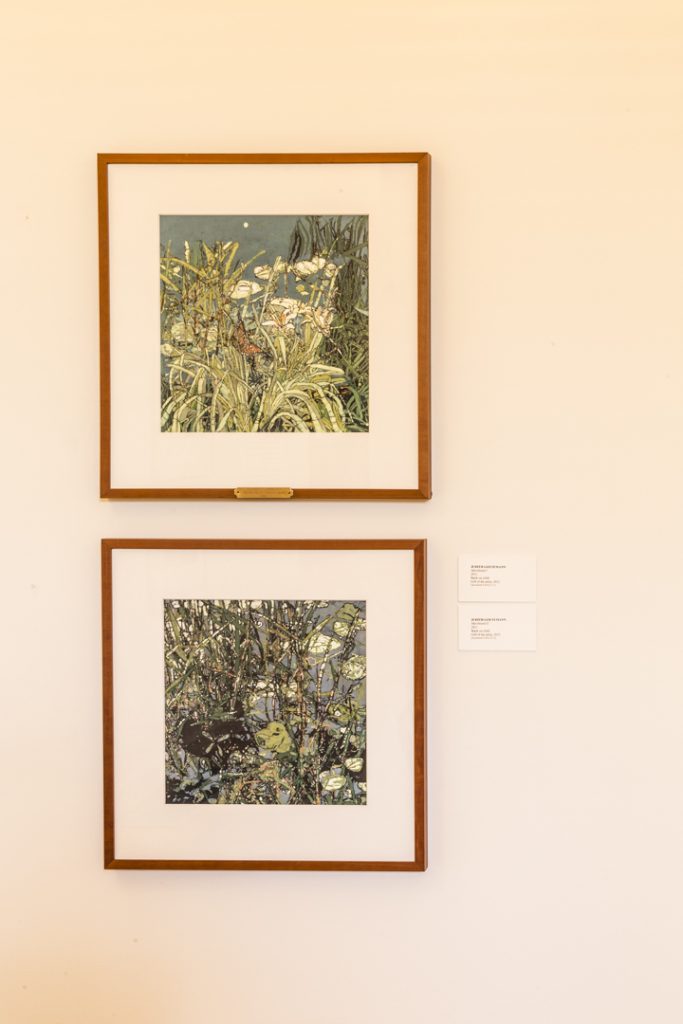
Top to bottom, Judith Goetemann, Marshland I, 2011, batik on cloth,
gift of the artist 2012; Marshland II, 2011, batik on cloth, gift of the artist 2012.
“Fifteen or 20 years ago, there was very little here by women artists,” says Oaks, who’s been with the museum for more than three decades. “It’s great to grow this part of our collection.” The annual show helps the museum acquire new works, giving contemporary women artists their proper place in Cape Ann’s extraordinary artistic history. Obvious heavy hitters such as Fitz Henry Lane, master interpreter of Gloucester’s waterfront, made up a 2009 survey show, forcing the museum to examine who it had left out: the women artists of Cape Ann. “I’m part of the women’s lib movement of the 1970s,” says Oaks. “I love spotlighting these women.”
In her experience, there is definitely a natural camaraderie among women who are in the serious and solitary business of making art, says Juni Van Dyke, whose two lovely abstract works Singing Beachand On Coolidge Pointare in the show. “My heart took flight when I learned that two of my artworks would belong to the Cape Ann Museum,” she says. “It is wonderful to have work in this particular exhibit because I am familiar with the artists. Each one of us has experienced the pain of rejection. It just comes with the territory; and then later, whenever an inclusion comes around, it is a very bonding experience.”
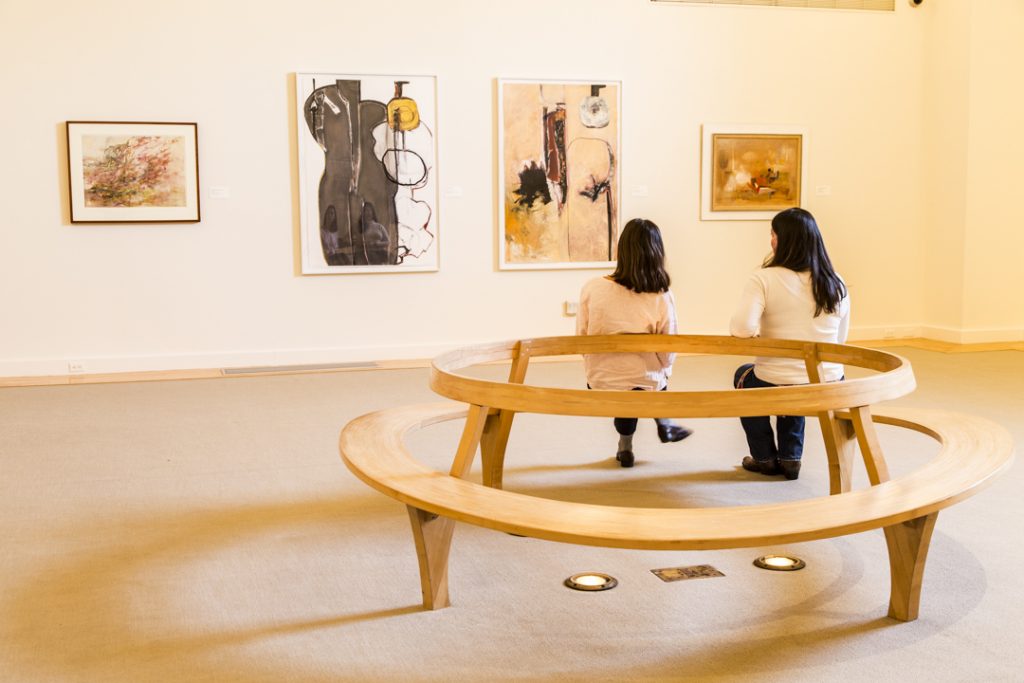
Middle paintings left to right, Homage to Matisse, Work on paper, 60” x 40” acrylic,
oil, and collage; After Homage, Work on paper, 60” x 40” acrylic, oil, and collage.
The wall text for this one-room show tells us: “While women have worked as artists in this region for as long as men and have exhibited their artwork alongside that of their male counterparts for over 100 years, many of Cape Ann’s most talented women artists remain in the shadows.”
One of these ladies is Judith Goetemann, whose artist husband often took the spotlight in Rocky Neck before his 2016 passing. Her batik-on-cloth pieces transport us into a meditative place, all dreamy butterflies and marshland. The largest pieces in the exhibition, by Ruth Mordecai of Rocky Neck, are abstract collages purchased with the help of the New York–based Kanter Kallman Foundation.
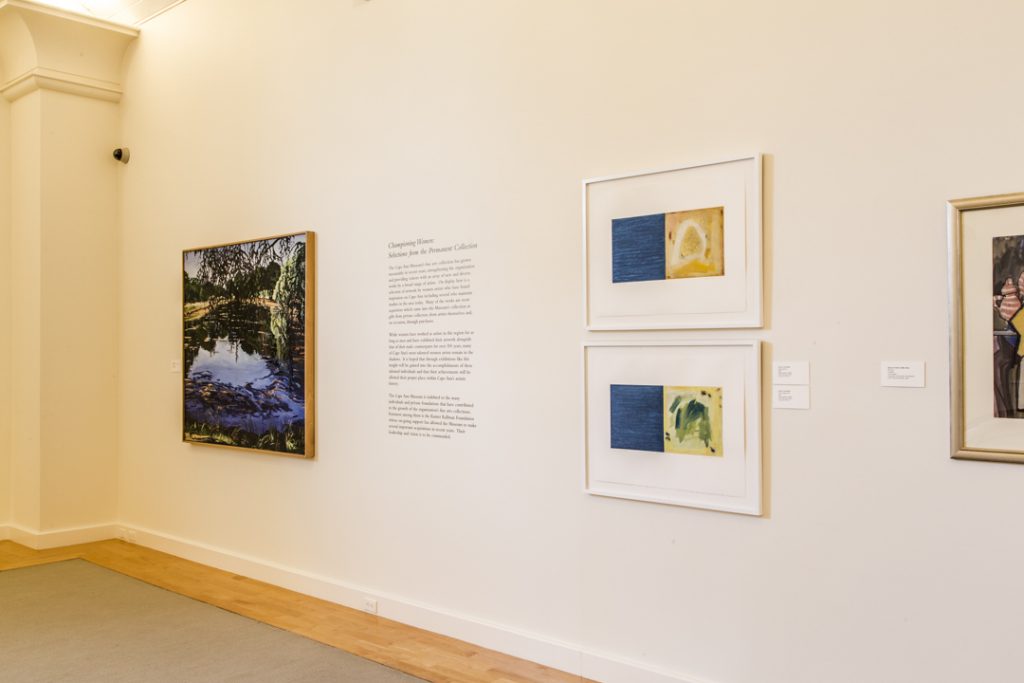
Many in the exhibition teach at area schools and have brought their fresh skills to recent workshops at the museum, helping shape new generations of aspiring artists. “They’re like best friends now,” says Oaks. “They’re willing to speak to docents, to do programming.”
While Pat Lowery Collins’s pastels Of Time and Tides I andIIoffer the underside of slick boulders and water, hinting at familiar coves, inlets, and beaches, Gabrielle Barzaghi’s pastels offer an inland experience with a glimpse of the view from her Dogtown studio, revealing a mythical primordial forest. Anna Comolli’s Winter View from Gloucester Milloffers up a gritty view of the train tracks that has some locals pointing to the familiar scene as if it were a snapshot of their daily lives. Joy Halsted’s acrylic portraits Cold Water #1and #2provide a familiar sensory experience of bathing in the waters off of Cape Ann, with a couple of grimacing ladies whose summer dip proves painful.
“This is the beauty of the art colony here,” says Oaks. “We have everything…from the absurd to the abstract.”
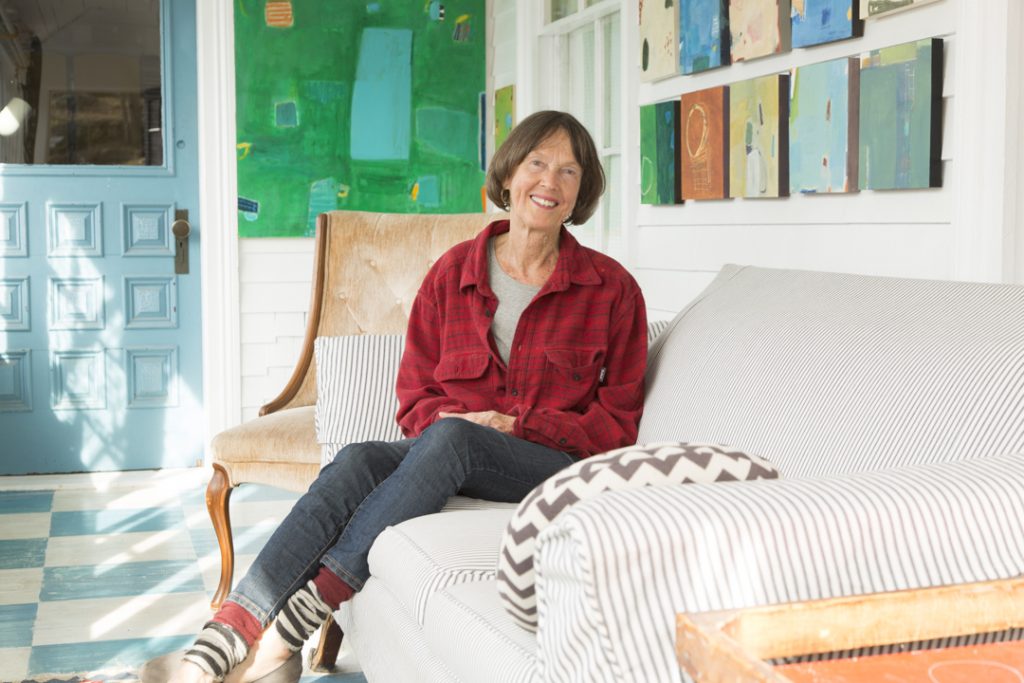
Juni Van Dyke
All of these works accomplish the mission of the Cape Ann Museum: to focus on the collective experience of living in Cape Ann, with its abundant light and beauty, while featuring prominent artists who lived in or were inspired by the area. Works in the permanent exhibition galleries reflect the fishing and maritime industries, the granite quarrying industry, and the Folly Cove Designers. This local collective of 45 (mostly) women worked away in home studios during the ’40s, ’50s, and ’60s using linoleum blocks to print on fabric, creating pieces for both fine department stores and museum exhibitions. Each spring and fall, art lovers can still search out hidden studios during the oldest open studio event in the country. On June 2 and 3, the Cape Ann Artisans Studio Tour will celebrate 35 years.
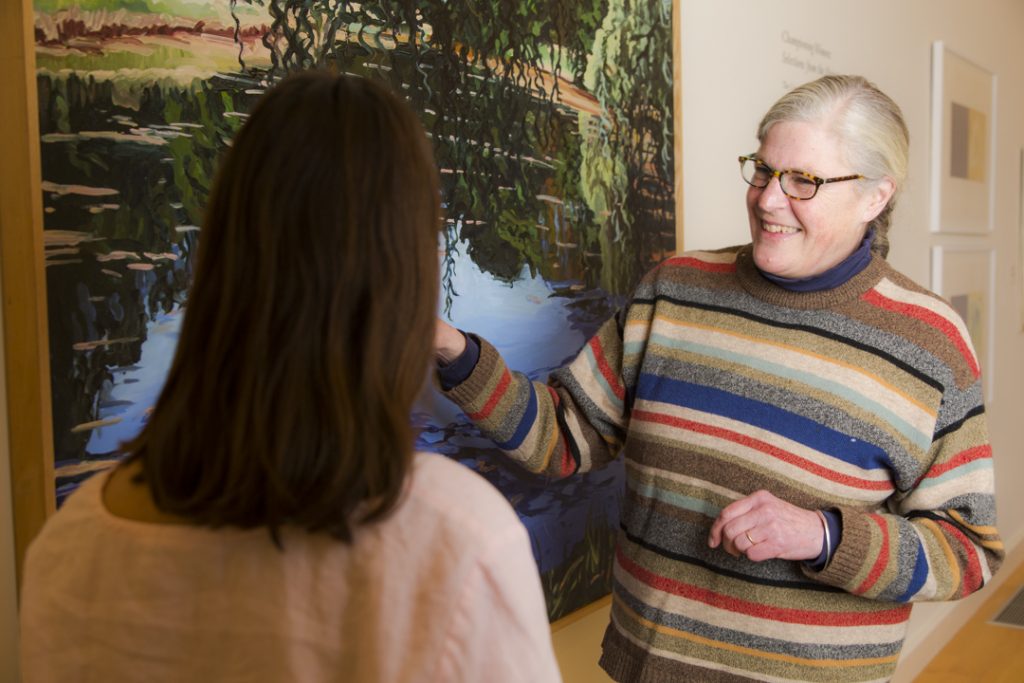
Martha Oaks curates works by Juni Van Dyke, Judith Goetemann, Ruth Mordecai,
Pat Lowery Collins, Gabrielle Barzaghi, Anna Comolli, Emma McCrea, Felicie
Waldo Howell, and Margaret Fitzhugh Browne.
Not to be missed are the historic paintings by women artists, which are interspersed throughout the collection and just across the hallway from the special exhibitions gallery. Truly, women artists were always here. Emma McCrea’s scene of Pigeon Cove features a rough-and-tumble waterfront scene of men and manly things, a subject normally reserved for her brethren painters. Margaret Fitzhugh Browne’s 1920 portrait of her sister in gardening gloves with yellow flowers in her lap is a beautiful work. Felicie Waldo Howell’s 1921 night view of Gloucester’s Town Hall Square decked in patriotic bunting shows us a large gathering at a dedication, at the site that would feature iconic bronze sculpture of Joan of Arc.
Women artists share much in common, says Van Dyke. “Sometimes it seems that art-making is a balancing act unique to us. Women are natural caretakers with an inclination to get to the studio after all is well on the home front. I am probably not alone when I say that there is nothing quite like taking a break in some little Gloucester place and then to recognize another woman artist in there too. It’s like bumping into a favorite blood relative. Among us, conversation flows easily. More than fun, it’s restorative.”
When the exhibition comes down, which is slated for some time this spring, and is all packed up, Van Dyke imagines that voices from the past will rise up with “a rustle of excitement” about the inclusion of women artists, recognized for what they’ve been doing all along.
Cape Ann Museum, 27 Pleasant St., Gloucester, 978-283-0455, capeannmuseum.org.

